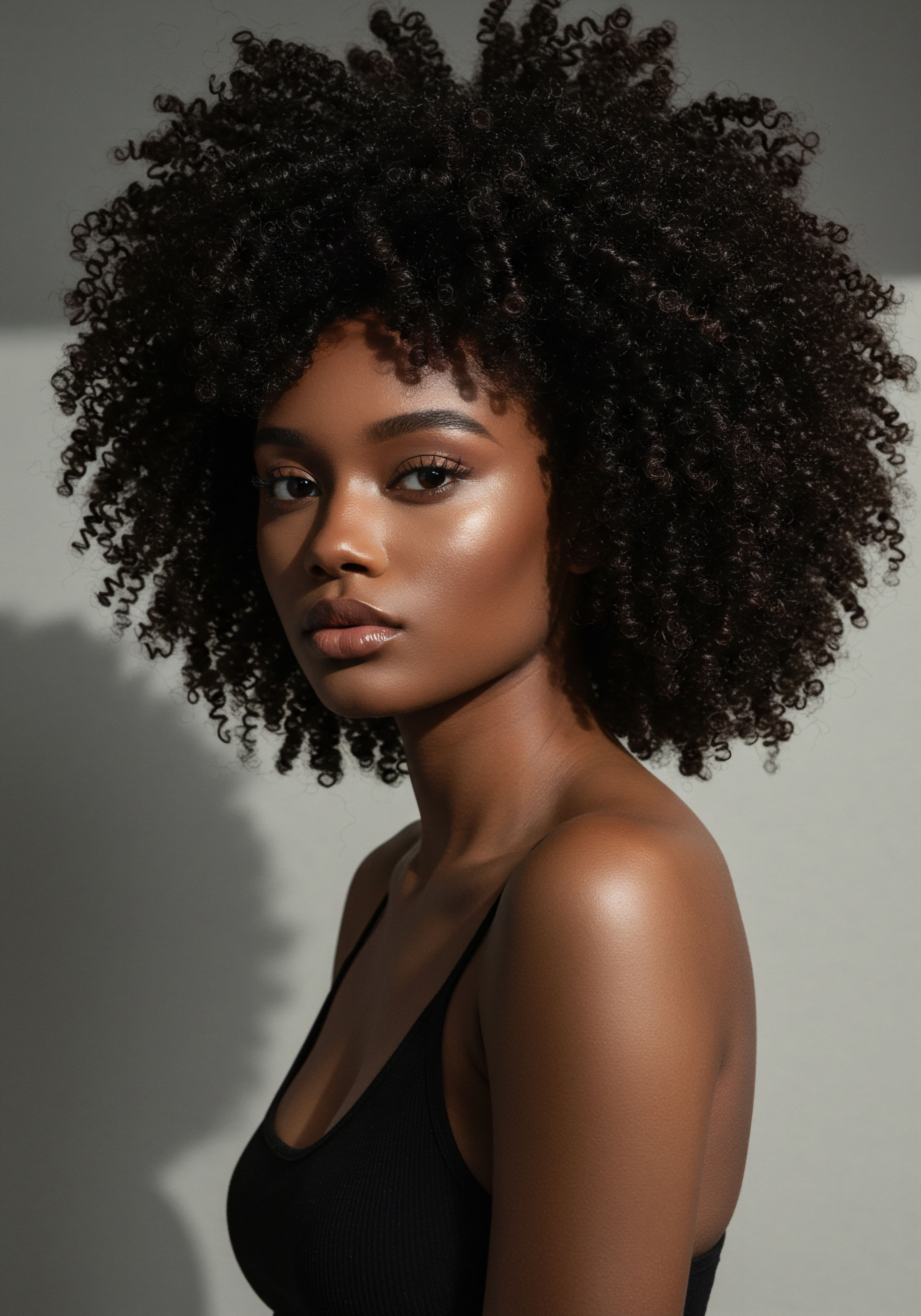
Roots
The ancient world, with its hushed crypts and enduring sands, holds whispers of life long past. For those of us who tend to the delicate balance of hair and scalp health, there is a particular resonance in these echoes. We often gaze upon images of royal mummies, their faces preserved through millennia, and wonder about the daily rhythms of their existence. What did their hair feel like?
How did they care for their crowns, those symbols of status and spirit? The answers, surprisingly, are not lost to time. They reside within the very fibers that clung to their ancient skulls, offering a silent, yet profound, chronicle of scalp realities.
Consider the foundational truth ❉ hair, whether naturally curly, coiled, or straight, grows from the scalp, a living landscape. The health of this landscape dictates the vibrancy of what springs forth. For the pharaohs and queens of ancient Egypt, whose very beings were intertwined with notions of purity, divinity, and enduring legacy, scalp care was not merely a cosmetic pursuit.
It was a practical necessity, a ritual, and a reflection of their place in the cosmic order. The remarkable preservation offered by the Egyptian climate and mummification practices grants us an unparalleled opportunity to peer into these ancient scalp ecosystems.
Mummified remains offer a unique window into the scalp health and hair care practices of ancient Egyptian royalty, revealing insights beyond mere aesthetics.

Scalp as a Living Surface
The scalp, a skin extension, serves as the nurturing ground for hair. Its condition—whether hydrated, irritated, or compromised—directly impacts hair quality. In ancient Egypt, the arid climate posed unique challenges to maintaining skin and hair integrity. The relentless sun and dry air would have prompted a constant need for moisturizing and protective measures.
Examination of mummified remains allows paleopathologists and forensic scientists to discern signs of various scalp conditions, from common irritations to more serious afflictions. These ancient scalps, despite their age, bear silent witness to struggles with environmental factors and biological realities that still resonate with modern concerns.
For instance, evidence of conditions such as dandruff, a common scalp complaint, has been noted in studies of ancient human remains. Dr. Kieron Leslie, a dermatologist who has examined mummies at the British Museum, reported finding signs of dandruff, eczema, and head lice.
This finding underscores that even in an era of advanced hygiene for its time, common scalp issues persisted, affecting individuals across social strata. The discovery of such persistent conditions suggests that the quest for a healthy, comfortable scalp is a timeless human endeavor.
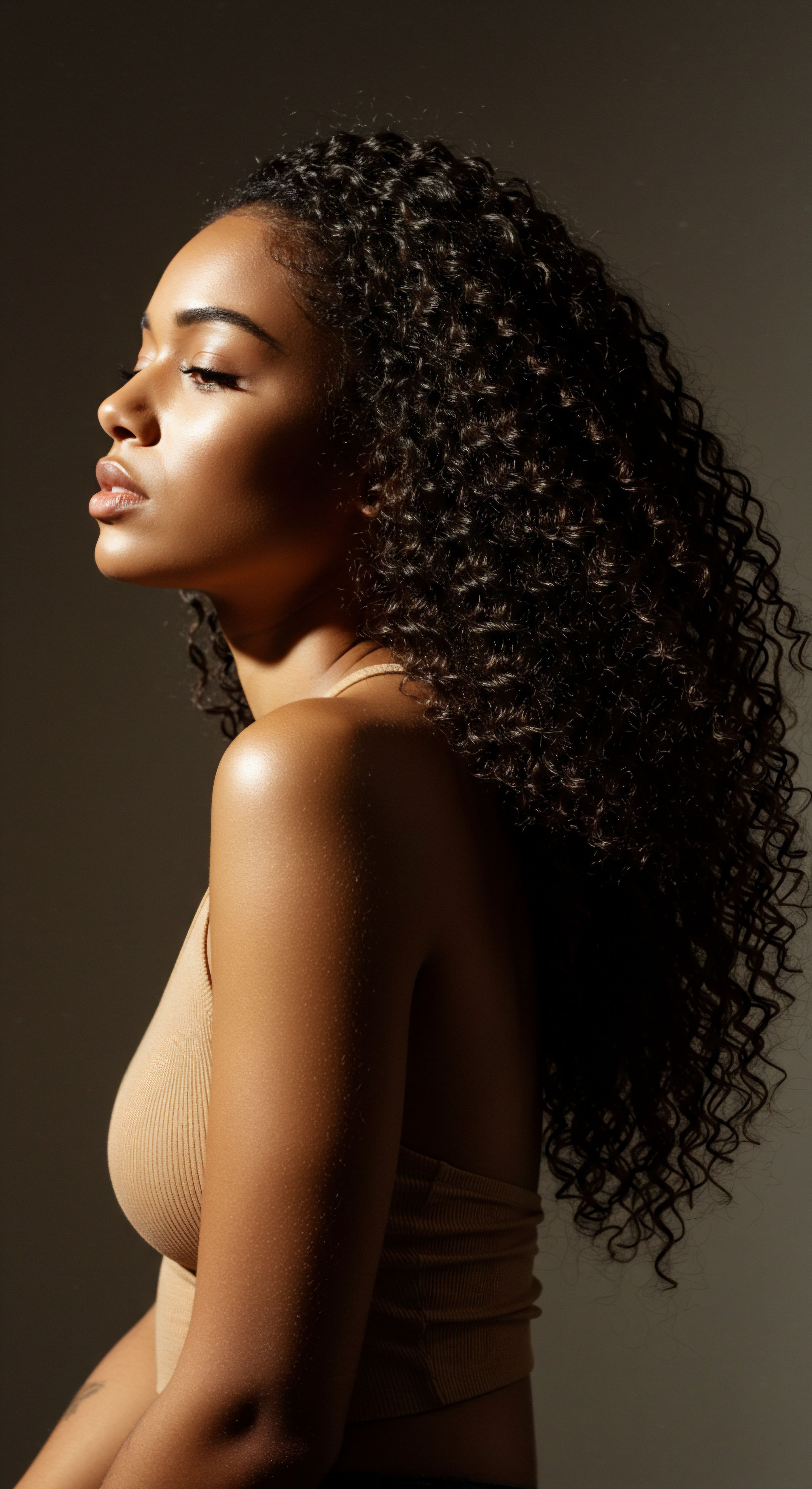
The Anatomy of Ancient Hair and Scalp
The very structure of hair, its cuticle, cortex, and medulla, along with the sebaceous glands and follicles of the scalp, hold clues to past health. Scientists, through microscopic analysis, can discern not only the natural texture and color of ancient hair but also signs of stress, damage, or the presence of external agents. The resilience of hair, even after millennia, allows for such detailed scrutiny.
- Hair Pigmentation ❉ Analysis of hair pigmentation can sometimes indicate natural hair color. For example, microscopic inspection of the roots of Ramesses II’s hair suggested his natural hair color was red, a finding that holds cultural significance given its association with the deity Set in ancient Egypt.
- Hair Structure and Damage ❉ The condition of the hair shaft itself can indicate environmental exposure, nutritional status, or even styling practices. Breakage patterns or signs of heat damage, if present, would point to specific challenges or techniques used in daily life.
- Follicle Health ❉ While direct examination of living follicles is impossible, the presence and condition of hair roots on mummified remains can sometimes hint at the health of the follicular unit at the time of death, providing clues about hair loss patterns or growth cycles.
The meticulous attention paid to hair, as evidenced by surviving combs, hairpins, and cosmetic preparations, points to a sophisticated understanding of its importance. Ancient Egyptians used oils, such as castor and almond oils, applied to both hair and scalp, not only for shine but also to protect against the harsh climate and potentially to combat lice. These ancient formulations, though simple, speak to a deep, practical knowledge of scalp conditioning.
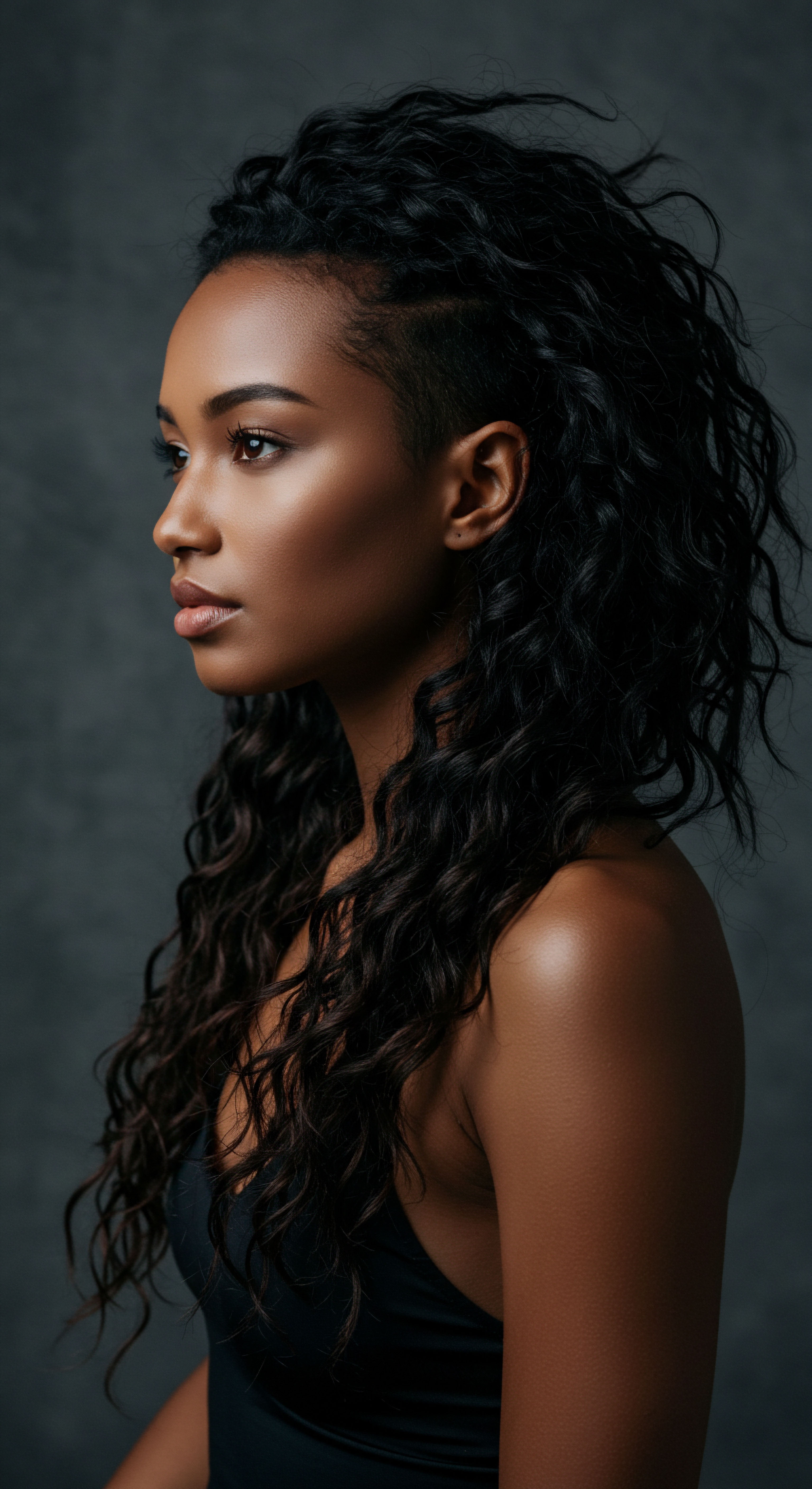
Ritual
Stepping from the foundational truths of ancient scalp biology, we find ourselves at the threshold of daily practices. For the ancient Egyptian elite, particularly the royal families, hair and scalp care transcended mere hygiene; it became a ritual, a deliberate sequence of actions infused with purpose and social meaning. The careful tending of one’s appearance, including the hair and scalp, was a public declaration of status, purity, and connection to the divine. The very existence of specialized hairdressers and barbers, often part of royal households, underscores the significance of these routines.
What hidden health realities do mummified royal remains reveal about scalp care in their daily rites? They unveil a constant battle against environmental stressors and common infestations, alongside a deep desire for a well-maintained, aesthetically pleasing appearance.
The dry, sandy climate of Egypt presented a constant challenge to hair and scalp health. Dust, sun, and heat could lead to dryness, irritation, and breakage. To counter these elements, the ancient Egyptians employed a range of protective and conditioning practices. Their solutions, often rooted in natural ingredients, speak to an intuitive understanding of hair and scalp needs that resonates even today.
Ancient Egyptian hair rituals reveal a practical and symbolic dedication to scalp well-being, often driven by the harsh environment and societal expectations.

The Daily Rites of Scalp Conditioning
The archaeological record provides tangible proof of these daily rituals. Combs made from materials like fish bones, ivory, and wood have been unearthed, some still containing traces of oils and even lice. These tools were not simply for styling; they were instrumental in distributing conditioning agents and maintaining scalp cleanliness.
The presence of fatty substances, including palmitic and stearic acids, on the hair of mummies suggests the use of a fat-based “gel” or ointment to set hairstyles and provide conditioning. This practice would have served a dual purpose ❉ aesthetic presentation and a protective barrier against environmental assault.
Ancient texts, such as the Ebers Papyrus, a medical document dating back to 1550 BCE, offer glimpses into remedies for various hair and scalp conditions, including hair loss. While some of these remedies might appear unusual by modern standards—mixtures involving animal fats or unusual plant concoctions—they reflect a systematic approach to addressing hair and scalp ailments. This pursuit of remedies, even if their efficacy was limited, speaks to the ongoing concern for scalp health among the populace, including royalty.
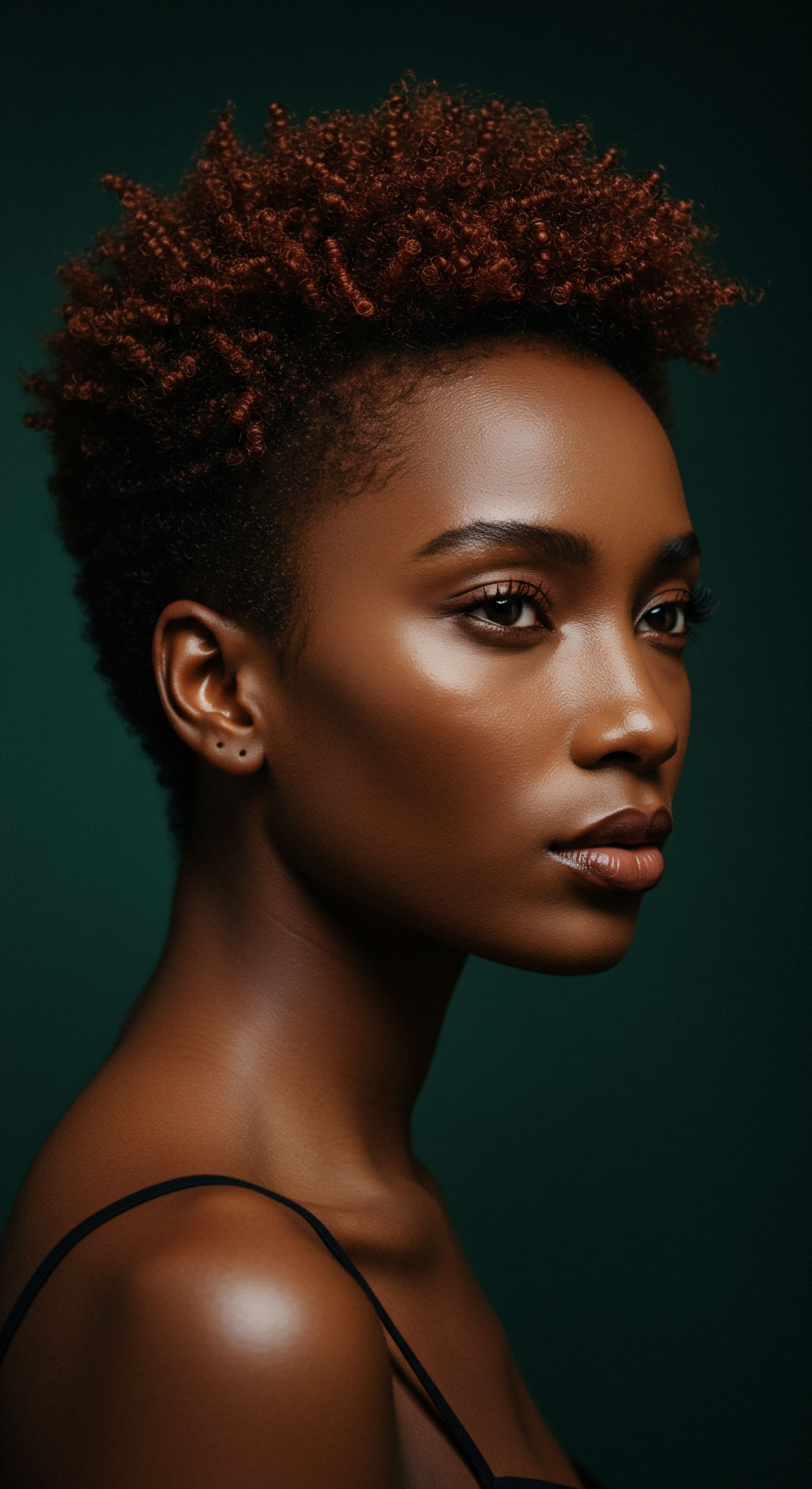
Scalp Cleansing and Protection
Cleanliness was paramount in ancient Egypt, especially for priests and royalty. While the exact frequency of hair washing is not known, regular cleansing was a routine. The use of wigs, often made of human hair or plant fibers and set with beeswax and animal fat, served a practical hygienic purpose.
Wigs protected the natural hair and shaved scalps from the sun and, significantly, helped to guard against lice infestations. This suggests a conscious effort to maintain scalp hygiene, recognizing the challenges posed by parasites.
The presence of lice on mummified remains, even those of the elite, is a striking and well-documented finding. For instance, archaeological studies have recovered head lice and their eggs (nits) from the hair of Egyptian mummies and from ancient combs. This indicates that despite their advanced hygiene practices and use of wigs, lice remained a persistent reality, affecting even the highest echelons of society. One study, for example, found seven head lice recovered from a wooden comb excavated in Antinoë, Egypt, dating between the fifth and sixth centuries CE.
This real-world data point, while perhaps uncomfortable to consider, offers a tangible link to the daily health realities of ancient individuals, reminding us that some challenges transcend time and status. The continuous effort to combat such infestations, through shaving, meticulous combing, and the use of oils, speaks volumes about the ancient Egyptians’ dedication to scalp care.
| Practice Wig Wearing |
| Purpose Protection from sun, hygiene, status symbol |
| Evidence from Mummies/Archaeology Wigs made of human hair and plant fibers, found in tombs. |
| Practice Oil Application |
| Purpose Moisture, shine, lice repellent |
| Evidence from Mummies/Archaeology Traces of castor, almond, and other oils on hair. |
| Practice Shaving Head |
| Purpose Hygiene, comfort in heat, ritual purity |
| Evidence from Mummies/Archaeology Evidence of shaved heads under wigs, priestly practices. |
| Practice Combing |
| Purpose Detangling, distributing oils, lice removal |
| Evidence from Mummies/Archaeology Wooden, ivory, and fish bone combs, some with lice remnants. |
| Practice Henna Dye |
| Purpose Coloring gray hair, strengthening |
| Evidence from Mummies/Archaeology Hair dyed with henna, found on mummies. |

Relay
Moving beyond the visible practices and immediate challenges, we arrive at a deeper inquiry ❉ what complex, interconnected realities do mummified royal remains truly relay about scalp care, bridging science, culture, and enduring human concerns? The silent testimony of these ancient bodies speaks not only of physical conditions but also of societal values, medical knowledge, and the very perception of self in an era long past. It is in this intricate interplay that the most profound insights emerge, inviting us to consider the broader implications of ancient scalp health for our understanding of human well-being across millennia.
The dry desert environment, a constant companion to ancient Egyptians, acted as both a preserver of remains and a relentless aggressor against living tissues. This duality shaped scalp health in ways we can now discern through scientific analysis. The need for constant hydration and protection was not merely a comfort; it was a biological imperative. The materials used, such as various oils and fats, were chosen for their emollient properties, aiming to counteract the desiccation that would otherwise lead to a dry, irritated scalp.
The scientific examination of mummified remains reveals complex health challenges and sophisticated care practices, painting a detailed picture of ancient scalp realities.
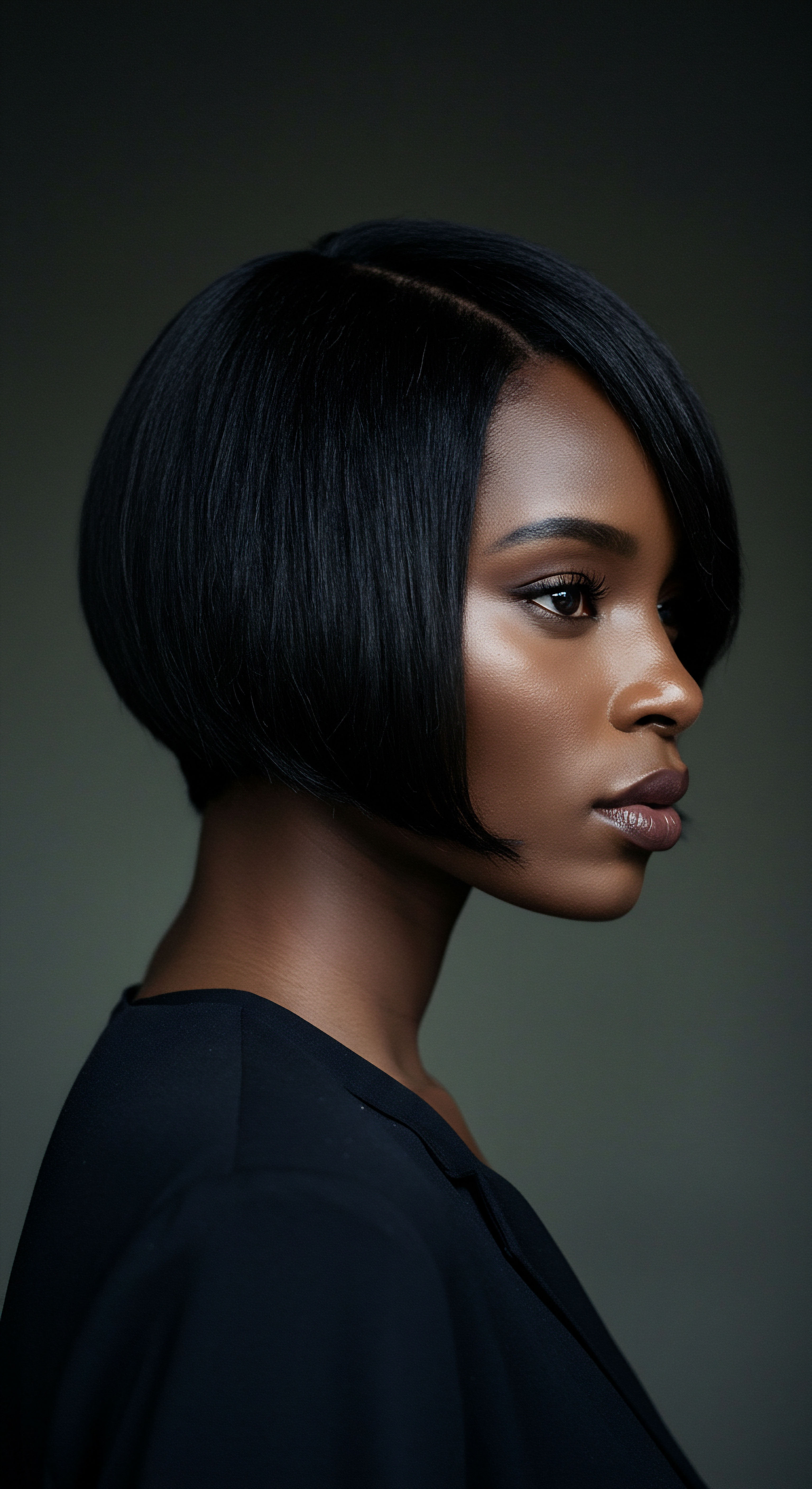
Environmental Stressors and Biological Responses
The ancient Egyptian climate, with its intense sun and minimal humidity, would have placed significant stress on the scalp’s barrier function. Modern dermatological understanding confirms that prolonged exposure to such conditions can lead to transepidermal water loss, scalp dryness, and increased susceptibility to irritation. The presence of fatty materials on mummified hair, identified as long-chain fatty acids like palmitic and stearic acid, points to the application of emollients. These substances would have created an occlusive layer, helping to trap moisture and protect the scalp, mirroring the function of modern conditioning agents.
Consider the remarkable preservation of hair itself. While other soft tissues degrade, hair often remains remarkably intact, allowing for detailed forensic and paleopathological studies. This resilience allows scientists to study not just the presence of external agents but also internal markers of health. For instance, the analysis of hair can sometimes provide clues about dietary deficiencies or systemic illnesses, though this area of research is still evolving for ancient samples.
The potential to extract DNA from the cement of lice nits, as demonstrated in a study on mummified remains from Argentina, offers a new avenue for understanding ancient human migration patterns and even the presence of viruses like Merkel cell polyomavirus, which can cause skin cancer. While this specific study was not on Egyptian royalty, it highlights the scientific potential of parasitic remnants on hair to reveal broader health data.
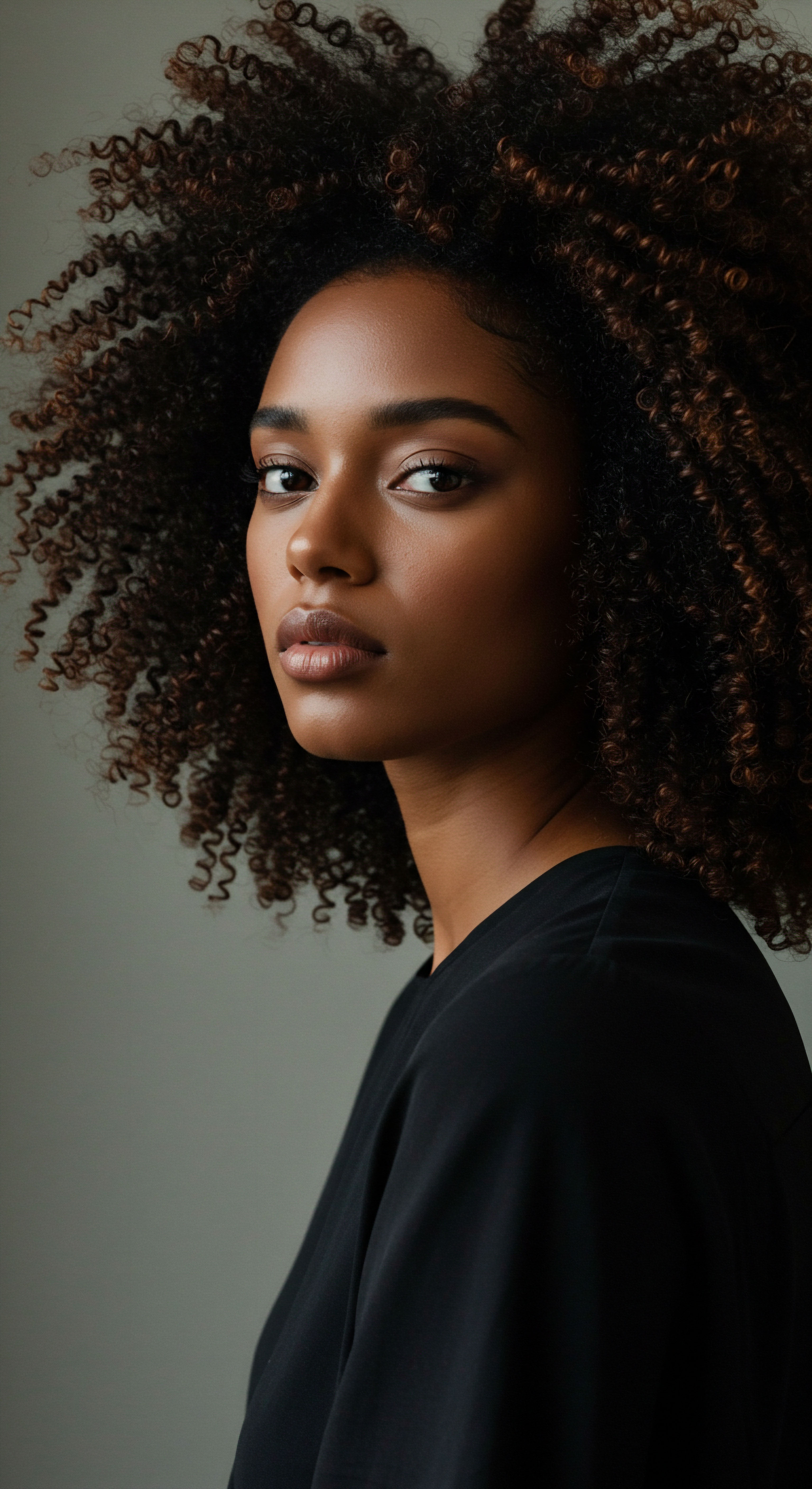
Parasitic Persistence and Societal Response
One of the most compelling hidden realities revealed by mummified remains is the widespread and persistent issue of parasitic infestations, particularly head lice. Despite the elite status and meticulous hygiene routines of royalty, lice were an inescapable part of life. The discovery of lice and nits on numerous mummies, including those of high status, challenges any romanticized notions of perfect ancient hygiene. This omnipresence of lice led to practical, and sometimes drastic, societal responses.
Why did ancient Egyptians, despite their efforts, contend with lice?
- Close Living Conditions ❉ Even in royal palaces, close proximity among individuals, including servants and family members, would have facilitated the spread of lice.
- Limitations of Ancient Treatments ❉ While remedies were sought, and shaving was practiced, the efficacy of ancient treatments for complete eradication would have been limited compared to modern pediculicides. The Ebers Papyrus, for instance, mentions remedies that involved ingesting date meal and water and spitting it out to drive away lice, a method likely ineffective.
- Wig Maintenance ❉ While wigs offered protection, they also required careful cleaning. If not thoroughly de-loused, wigs themselves could become vectors for re-infestation.
The response to lice, particularly among priests and some members of the elite, was often radical ❉ shaving the entire head and body. This practice, while extreme, demonstrates a deep understanding of the parasite’s life cycle and a pragmatic approach to control. The wearing of wigs then became a means to maintain a desired aesthetic while ensuring scalp cleanliness. This interplay between health necessity and cultural aesthetics provides a nuanced understanding of ancient beauty standards.

The Royal Red Hair of Ramesses II
A specific case that speaks to both genetic predispositions and cosmetic practices is that of Pharaoh Ramesses II. Forensic analysis of his mummified hair revealed that, even in his old age when his hair had turned white, traces of natural red pigments were present at the roots. This finding suggests that Ramesses II was a natural redhead. The reddish-yellow color of his hair at the time of discovery was attributed to the use of a dilute henna solution, applied perhaps to rejuvenate the color of his aging hair.
This detail holds significant cultural weight. In ancient Egypt, individuals with red hair were sometimes associated with the deity Set, a complex figure linked to chaos but also strength. The fact that Ramesses II’s father was named Seti I, meaning “follower of Set,” adds another layer of cultural context to this biological reality. This example shows how genetic traits, cosmetic interventions, and cultural beliefs converged in the perception and care of royal hair and scalp.

Reflection
As we gently close this chapter on the hidden scalp realities revealed by mummified royal remains, a quiet understanding settles. The ancient Egyptians, in their profound connection to the cycles of life and the enduring spirit, remind us that the pursuit of well-being, even for something as seemingly simple as scalp care, is a timeless human endeavor. Their struggles with persistent parasites, their ingenuity in crafting protective emollients, and their blending of practical hygiene with profound cultural meaning offer more than historical anecdotes.
They whisper a truth about our shared humanity, about the universal desire for comfort, health, and a sense of grace in our own skin. The echoes of their meticulous rituals resonate with our own daily practices, inviting us to find a deeper purpose in the quiet moments we dedicate to nurturing ourselves.
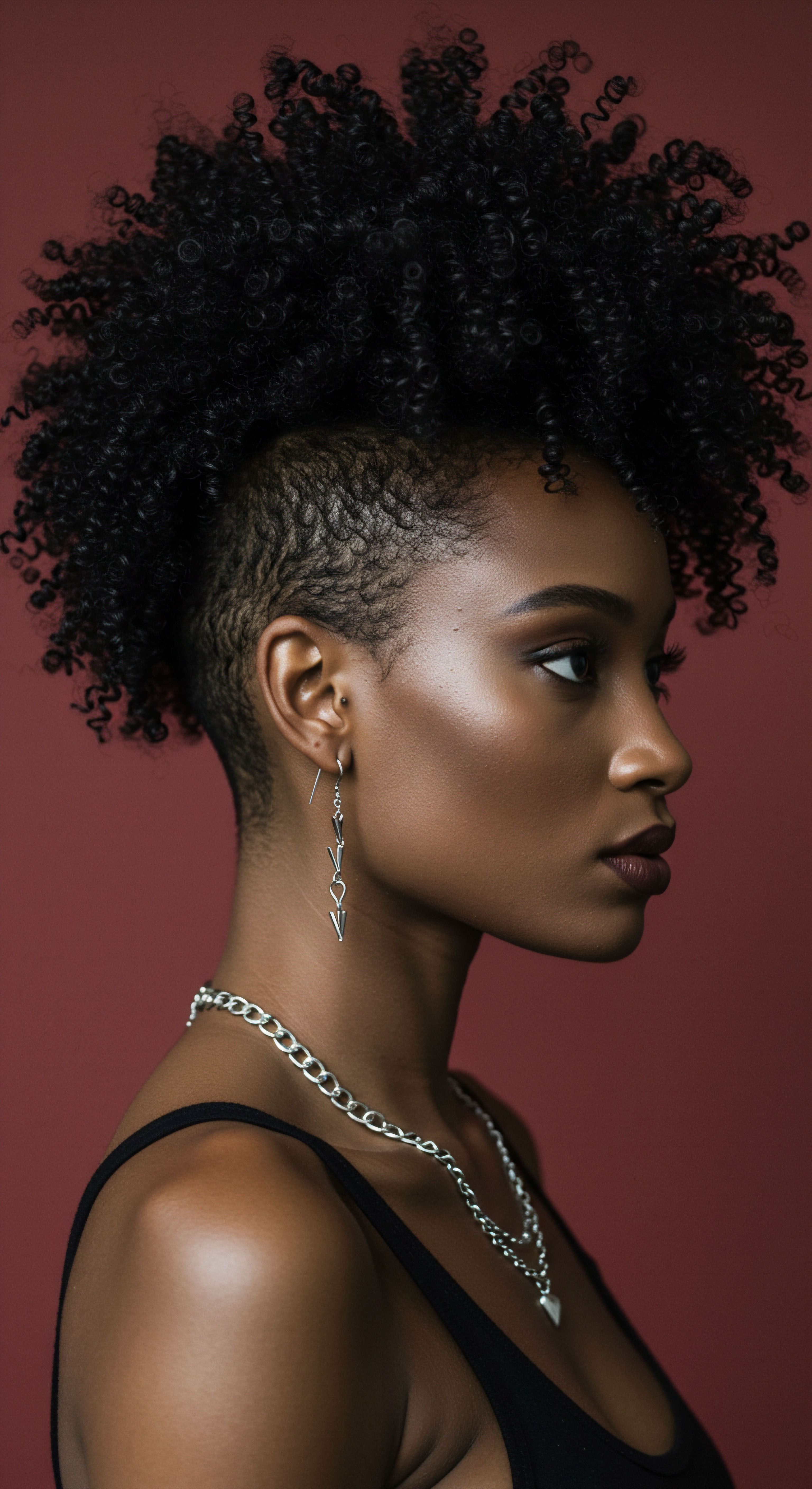
References
- Cox, J.S. The Construction of an Ancient Egyptian Wig (c. 1400 BC) in the British Museum. Journal of Egyptian Archaeology, 1977, Vol. 63, pp. 67-70.
- Fletcher, A. J. A Tale of Hair, Wigs and Lice. Egyptian Archaeology ❉ the Bulletin of the Egypt Exploration Society, 1994, Vol. 5, pp. 31-33.
- Fletcher, J. Ancient Egyptian Hair ❉ a study in style, form and function. Unpublished PhD thesis, University of Manchester, 1995.
- Fletcher, J. Ancient Egyptian Hair and Wigs. The Ostracon ❉ Journal of the Egyptian Study Society, 2002, Vol. 13, No. 2, pp. 2-8.
- Fletcher, J. and Salamone, F. An Ancient Egyptian Wig ❉ Construction and Reconstruction. Internet Archaeology, 2016, Vol. 42.
- Kandil, H.A.A. and Salama, M.E.A. Role of the Hair in Ancient Egypt. International Journal of Tourism and Hospitality Management, 2018, Vol. 1, No. 1, pp. 77-78.
- McCreesh, N. and Evershed, R.P. Ancient Egyptian Hair Gel ❉ The First Evidence of a Fat-Based Styling Product. Journal of Archaeological Science, 2011, Vol. 38, No. 12, pp. 3432-3434.
- Mohamed, H.I.A. Hair in Religious Thought and Ancient Egyptian Literature. Luxor International Journal of Archaeological Studies, 2021, Vol. 4, No. 2, pp. 48-73.
- Palma, R.L. Ancient Head Lice on a Wooden Comb from Antinoe, Egypt. The Journal of Egyptian Archaeology, 1991, Vol. 77, pp. 195-196.
- Tassie, G.J. The Social and Ritual Contextualisation of Ancient Egyptian Hair and Hairstyles from the Protodynastic to the End of the Old Kingdom. Unpublished PhD thesis, University College London, 2010.
- Wilkinson, R.H. The Complete Gods and Goddesses of Ancient Egypt. Thames & Hudson, 2003.